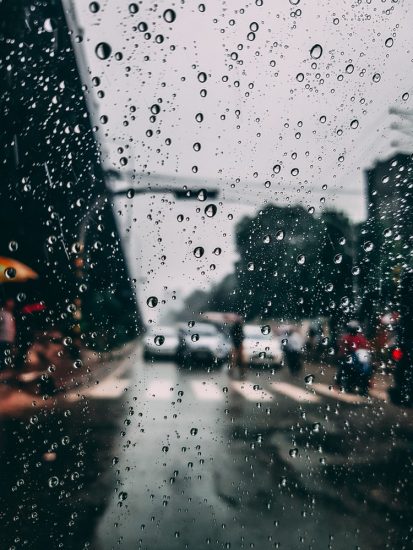
469-530-3330

Though Texas is not always known for being a place full of bad weathers and storms, homes are still at risk for storm damage as they are in any other part of the nation. Roofs can be particularly vulnerable, especially if they’re older or have faced damage in the past. Understanding how your roof can be damaged in storms can be a good start. Knowing how to prevent storm damage can save you from the expense of repairs.
 Hail damage can be particularly damaging to your roof. Hail occurs when water droplets freeze in the air and fall down to the ground in frozen form. Hailstones can range in size from the size of a dime to as large as a softball. Even small hailstones can damage your roof when they fall since they are hard and fall fast enough to keep from melting into rain. Larger hailstones may even be strong enough to puncture a roof, leaving a hole that has to be repaired. As with any roof damage in Texas, the age and condition of your roof can impact the damage. An older roof or one that has taken previous damage may be at higher risk for greater damage from hail. It is smart to get a free roofing quote if you’ve recently experienced hail damage.
Hail damage can be particularly damaging to your roof. Hail occurs when water droplets freeze in the air and fall down to the ground in frozen form. Hailstones can range in size from the size of a dime to as large as a softball. Even small hailstones can damage your roof when they fall since they are hard and fall fast enough to keep from melting into rain. Larger hailstones may even be strong enough to puncture a roof, leaving a hole that has to be repaired. As with any roof damage in Texas, the age and condition of your roof can impact the damage. An older roof or one that has taken previous damage may be at higher risk for greater damage from hail. It is smart to get a free roofing quote if you’ve recently experienced hail damage.
 Though many people think wind is the least damaging of storms, a strong windstorm can be dangerous to your roof. If the wind is at the proper angle and speed, shingles can be ripped from the roof. Wind can be particularly dangerous to a roof because the damage may not always be immediately visible. This makes shingles less adhesive on the roof and makes the roof vulnerable. In addition, wind can bring tree branches onto your roof, which can also cause damage and the need for a roof replacement. Large branches or full trees can puncture your roof and even do damage to the interior of your Dallas home.
Though many people think wind is the least damaging of storms, a strong windstorm can be dangerous to your roof. If the wind is at the proper angle and speed, shingles can be ripped from the roof. Wind can be particularly dangerous to a roof because the damage may not always be immediately visible. This makes shingles less adhesive on the roof and makes the roof vulnerable. In addition, wind can bring tree branches onto your roof, which can also cause damage and the need for a roof replacement. Large branches or full trees can puncture your roof and even do damage to the interior of your Dallas home.
 Heavy rainstorms can also cause damage to a roof. Along with causing further damage to a vulnerable roof, heavy rain can soak into the roof and cause mold. Shingled roofs can help protect your roof against rain and mold, but heavy rains can damage shingles. Texas may not be known for its heavy rainfalls, but some areas are at risk for hurricanes, which include heavy rain as well as wind, and lead to significant storm damage in Texas.
Heavy rainstorms can also cause damage to a roof. Along with causing further damage to a vulnerable roof, heavy rain can soak into the roof and cause mold. Shingled roofs can help protect your roof against rain and mold, but heavy rains can damage shingles. Texas may not be known for its heavy rainfalls, but some areas are at risk for hurricanes, which include heavy rain as well as wind, and lead to significant storm damage in Texas.
Whether it’s your home or commercial business, the best way to deal with storm damage to your roof is to keep it from happening in the first place. The first step is to have your roof examined by experts on a regular basis. Any damage that’s not immediately apparent can be identified by an expert so it can be dealt with before it leads to major problems. It is also beneficial to understand what an insurance claim for a damaged roof consists of. Along with regular inspection, be sure to remove tree branches, especially those that are dead, hanging over your roof. During storms, these branches can fall onto your roof, leading to major storm damage in the Texas area.
In order to prevent storm damage to your roof, a key is finding the best roofing expert to meet your needs. When you’re looking for a roofing expert to help prevent storm damage or repair your roof after a storm in Midlothian, Mansfield, Waxahachie or another area of this beautiful state of Texas, be sure that you find someone who is insured and can show you proof that they are qualified to examine and repair roofs. You should also make sure that your roofing expert will communicate clearly with you so that you understand that state of your roof and what, if anything, needs to be done to minimize the risk of storm damage. The good news is that once you contact Elite Roofing and Consulting, you can use our experts to repair any damage that does occur to your roof.